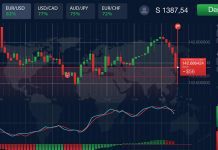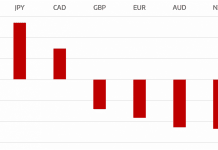Table of Contents
- Introduction to Trading Decisions
- Understanding Technical Analysis
- Key Tools in Technical Analysis
- Exploring Order Flow
- The Role of Market Participants in Order Flow
- Comparing Technical Analysis and Order Flow
- Case Studies: Real-World Applications
- Psychological Aspects in Trading Decisions
- Advanced Techniques: Integrating Both Approaches
- Industry Insights and Expert Opinions

Introduction to Trading Decisions
In the dynamic world of trading, making informed decisions can be the difference between profit and loss. Traders have long debated the merits of different approaches to market analysis, with two of the most prominent being Technical Analysis and Order Flow. Each method offers unique insights and tools to help traders navigate the complexities of financial markets.
Understanding Technical Analysis
Technical analysis is a method that uses historical price data and trading volumes to forecast future price movements. By analysing price charts and identifying patterns, traders attempt to predict where prices are headed.
Key Concepts in Technical Analysis
– Price Patterns: These are formations created by the price movement on a chart, such as head-and-shoulders, double tops, and triangles.
– Indicators: Tools like moving averages, RSI (Relative Strength Index), and MACD (Moving Average Convergence Divergence) provide insights into market trends and potential reversal points.
– Support and Resistance Levels: These are critical price levels where a security tends to stop and reverse.
Technical analysis assumes that all market information is already reflected in prices, allowing traders to focus solely on historical data for predictions.
Key Tools in Technical Analysis
Chart Types
– Line Charts: Simplest form, useful for identifying trends.
– Bar Charts: Show opening, closing, high, and low prices.
– Candlestick Charts: Offer more detailed information with visual appeal.
Popular Indicators
– Bollinger Bands: Indicate volatility by placing bands above and below a moving average.
– Fibonacci Retracement: Used to identify potential reversal levels.
These tools help traders develop strategies based on historical price movements, allowing for informed trading decisions.
Exploring Order Flow
Order flow analysis focuses on understanding the actions of buyers and sellers within the market. It provides real-time data about how orders are placed, filled, or cancelled, offering a granular view of market dynamics.
Basics of Order Flow
– Order Book: Displays live orders waiting to be executed; shows bid and ask prices.
– Volume Profile: Represents traded volume over a specific period at each price level.
Order flow aims to capture the intentions behind trades by examining how orders are executed rather than relying solely on historical price data.
The Role of Market Participants in Order Flow
Understanding who participates in the market can offer significant insights into order flow:
Types of Market Participants
– Retail Traders: Often have less impact on market prices but can provide liquidity.
– Institutional Investors: Have significant influence due to large trade volumes.
– Market Makers: Provide liquidity by being ready to buy or sell at publicly quoted prices.
Institutional investors’ activities typically have a profound effect on order flow due to their substantial capital resources, making it crucial for traders using order flow analysis to monitor institutional behaviour closely.
Comparing Technical Analysis and Order Flow
Each approach has its benefits and limitations:
Advantages of Technical Analysis
– Excellent for identifying long-term trends.
– Offers numerous tools for various strategies.
Advantages of Order Flow
– Provides real-time market insights.
– Helps understand immediate supply-demand dynamics.
Limitations
– Technical analysis may ignore current market sentiment.
– Order flow requires understanding complex data streams.
Choosing between technical analysis and order flow often depends on a trader’s specific goals, experience level, and risk tolerance.
Case Studies: Real-World Applications
Case Study 1: Using Technical Analysis for Long-Term Investment
A trader identified a head-and-shoulders pattern on a stock chart indicating a potential downward trend reversal. By confirming with RSI divergence, they shorted the stock, resulting in significant gains when the predicted drop occurred.
Case Study 2: Real-Time Decision Making with Order Flow
Using tools like Bookmap, a trader observed large buy orders clustering at a support level before an earnings report. Anticipating positive news based on this activity led to profitable trades as the stock surged post-announcement.
These examples illustrate how both methods can be effectively employed depending on market conditions and available data.
Psychological Aspects in Trading Decisions
Emotions play a critical role in trading success:
Overcoming Emotional Biases
– Fear of Missing Out (FOMO): Leads to impulsive decisions; mitigated by sticking to predefined strategies.
– Confirmation Bias: Ignoring data that contradicts beliefs; overcome by objective analysis using diverse indicators.
Effective traders maintain discipline by managing emotions through structured decision-making processes, whether using technical analysis or order flow insights.
Advanced Techniques: Integrating Both Approaches
Combining technical analysis with order flow can enhance decision-making:
Hybrid Strategies
- Trend Confirmation: Use technical indicators to identify trends; validate strength through order flow data.
- Entry/Exit Optimization: Determine entry points via chart patterns; refine timing with real-time order book information.
This dual approach allows traders to leverage comprehensive insights from both historical data patterns and current market conditions for more informed trading decisions.
Industry Insights and Expert Opinions
Industry veterans often advocate for a balanced approach:
Expert Recommendations
– Combine methodologies for diversified insights.
– Continuously adapt strategies based on evolving market environments.
Renowned traders emphasize ongoing learning and adaptability as key drivers for sustained success. Understanding both technical analysis and order flow equips traders with a robust toolkit tailored for today’s fast-paced markets.
In conclusion, while both technical analysis and order flow offer valuable perspectives, integrating these approaches can provide a holistic view of the markets. As traders become more sophisticated, leveraging multiple methodologies becomes not just advantageous but essential in crafting effective trading strategies tailored to individual goals and market conditions.
HedgeThink.com is the fund industry’s leading news, research and analysis source for individual and institutional accredited investors and professionals



































